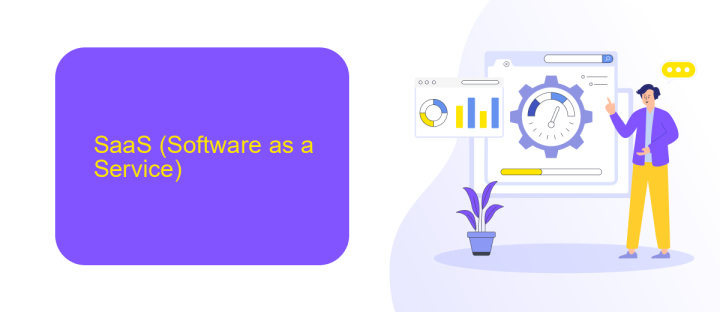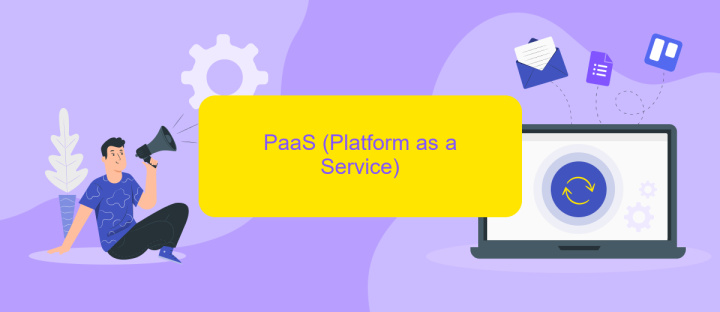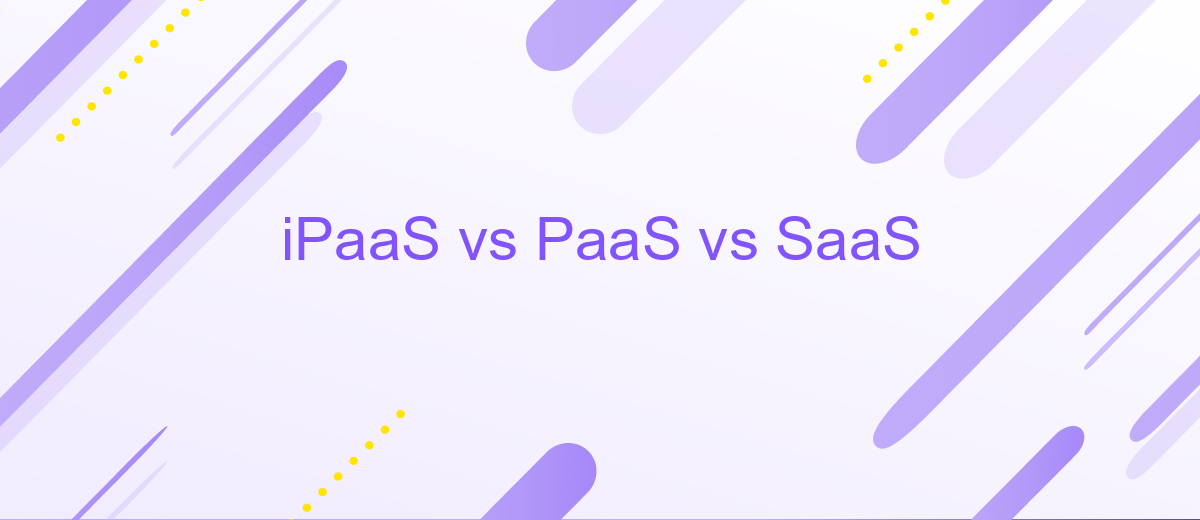iPaaS vs PaaS vs SaaS
In the rapidly evolving landscape of cloud computing, understanding the differences between iPaaS, PaaS, and SaaS is crucial for businesses seeking to optimize their operations. Each model offers unique advantages and caters to different needs, from integration and platform development to software delivery. This article delves into the core distinctions, helping you make informed decisions for your technological infrastructure.
Introduction
In today's rapidly evolving digital landscape, businesses are increasingly relying on cloud-based solutions to streamline their operations and enhance productivity. Among the most popular cloud service models are iPaaS (Integration Platform as a Service), PaaS (Platform as a Service), and SaaS (Software as a Service). Each of these models offers unique advantages and caters to different business needs, making it essential to understand their distinctions and applications.
- iPaaS: Focuses on integrating various applications and data sources.
- PaaS: Provides a platform for developers to build, deploy, and manage applications.
- SaaS: Delivers software applications over the internet on a subscription basis.
Choosing the right cloud service model can significantly impact a company's efficiency and scalability. For instance, services like ApiX-Drive enable seamless integration of various applications, ensuring that data flows smoothly across different platforms. Understanding the core functionalities and benefits of iPaaS, PaaS, and SaaS will help businesses make informed decisions and leverage the full potential of cloud computing.
SaaS (Software as a Service)

Software as a Service (SaaS) is a cloud-based service where instead of downloading software on your desktop PC or business network to run and update, you instead access an application via an internet browser. This model offers numerous advantages, including reduced costs, easy scalability, and accessibility from any location with internet access. Users can avoid the complexities of hardware management and software maintenance, as these are handled by the service provider.
SaaS solutions are ideal for businesses looking to streamline their operations without the need for extensive IT infrastructure. One key aspect of SaaS is its ability to integrate with other services seamlessly. For instance, ApiX-Drive offers a platform that facilitates the integration of various SaaS applications, enabling businesses to automate workflows and synchronize data across different tools. This integration capability enhances productivity and ensures that all business processes are interconnected and efficient.
PaaS (Platform as a Service)

Platform as a Service (PaaS) provides a framework for developers to build, deploy, and manage applications without worrying about the underlying infrastructure. This model offers a range of tools and services that streamline the development process, making it easier to create scalable and robust applications.
- Development Tools: PaaS offers integrated development environments (IDEs) that simplify coding and debugging.
- Middleware: It provides essential middleware services that facilitate communication between different application components.
- Database Management: PaaS platforms come with built-in database management systems, ensuring data storage and retrieval are efficient.
- Scalability: Automatic scaling features help applications handle varying loads without manual intervention.
- Integration Services: Tools like ApiX-Drive enable seamless integration with various third-party services, enhancing application functionality.
By leveraging PaaS, businesses can accelerate their development cycles and reduce operational complexities. It allows developers to focus on writing code and innovating, rather than managing servers and infrastructure. With integration services like ApiX-Drive, connecting different software systems becomes effortless, further enhancing productivity and efficiency.
iPaaS (Integration Platform as a Service)

Integration Platform as a Service (iPaaS) is a cloud-based solution designed to simplify the integration of various applications and data sources. It provides a unified platform where businesses can connect disparate systems, streamline workflows, and automate processes without extensive coding or manual intervention.
iPaaS solutions like ApiX-Drive offer user-friendly interfaces and pre-built connectors, making it easier for organizations to integrate their existing tools and platforms. This eliminates the need for complex custom integrations and reduces the time and cost associated with traditional integration methods.
- Seamless integration of multiple applications
- Automated workflows and data synchronization
- Pre-built connectors for popular tools
- Scalability to accommodate growing business needs
By leveraging iPaaS, companies can enhance their operational efficiency and improve data accuracy. The platform's ability to integrate various systems ensures that information flows seamlessly across the organization, enabling better decision-making and fostering innovation. ApiX-Drive, with its robust integration capabilities, is an excellent example of how iPaaS can transform business processes.
Comparison of SaaS, PaaS, and iPaaS
Software as a Service (SaaS) provides ready-to-use applications over the internet, eliminating the need for users to install and maintain software. Examples include Google Workspace and Salesforce. Platform as a Service (PaaS) offers a framework for developers to build, deploy, and manage applications without worrying about the underlying infrastructure. It provides tools and services like databases, servers, and development environments, with examples including Microsoft Azure and Google App Engine. Integration Platform as a Service (iPaaS), such as ApiX-Drive, focuses on integrating different applications and services, enabling seamless data flow and automation across various platforms.
While SaaS delivers complete software solutions, PaaS provides a foundation for developing custom applications. iPaaS, on the other hand, is essential for connecting disparate systems, making it easier for businesses to streamline workflows and enhance productivity. For instance, ApiX-Drive allows users to connect apps without coding, facilitating quick and efficient integrations. Each service type serves distinct purposes: SaaS for end-user applications, PaaS for development environments, and iPaaS for integration and automation, catering to different business needs and technical requirements.
- Automate the work of an online store or landing
- Empower through integration
- Don't spend money on programmers and integrators
- Save time by automating routine tasks
FAQ
What is the difference between iPaaS, PaaS, and SaaS?
When should I use iPaaS instead of PaaS or SaaS?
Can iPaaS be used with both PaaS and SaaS solutions?
What are some common use cases for iPaaS?
How does iPaaS simplify the integration process?
Do you want to achieve your goals in business, career and life faster and better? Do it with ApiX-Drive – a tool that will remove a significant part of the routine from workflows and free up additional time to achieve your goals. Test the capabilities of Apix-Drive for free – see for yourself the effectiveness of the tool.


